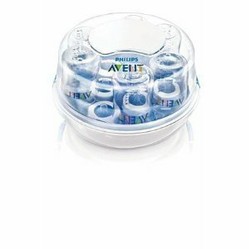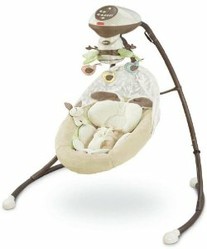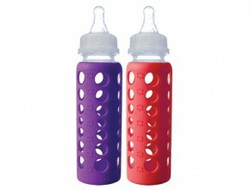
How To Clean & Sterilize Baby Bottles
by wrylilt
Keeping baby bottles clean is an important way to keep your infant healthy. Here is a quick guide.
When your new baby arrives, chances are that you'll be overloaded with information - and lots of that information will be completely contradictory. Of course when it comes to your baby's food source, you want to make sure that baby gets the cleanest and best milk possible. Improperly cleaned bottles and other items that your baby will put in their mouth can lead to germ build up which in turn can give baby a mild upset stomach, vomiting or in some cases worse symptoms. Babies do not fully develop their own full immune system till after four months of age, meaning that germs can upset them a lot easier than adults. Even after four months, they have a lower immune system than adults. The following information will help you correctly clean and prepare your baby's bottles, in the easiest and quickest ways possible.
Step by Step Guide to Cleaning Baby Bottles
1. Rinse the bottle/s to remove any milk residue, especially if you won't be washing it straight away.
2. Wash the bottle/s in hot soapy water, either in a sink or under a tap. Always use a brush designated just for bottles, so you don't mix food and other germs with baby's bottles.
3. Sterilise the bottle/s using one of the methods outlined below.
4. Use the bottle immediately - either for a feed or by making the bottle up and storing it in the fridge for later reheating. If you do need to store sterilised, unmade bottles, seal them and place them in the fridge.
Different Methods of Sterilizing Baby Bottles
There are several ways to sterilise bottles, and each way works well. The choice is yours based on what suits your needs and is most convenient.
1. Boiling - This way takes more time but is a good option if you are breastfeeding and won't be using many bottles. Bring water to the boil on the stove and submerge bottles and teats for five minutes.
2. Microwave - This is an easy and convenient way to sterilise baby's bottles. A sealed container with the bottles and some water in the bottom is microwaved for a set amount of time (usually 2-5 minutes) and the hot steam sterilises the bottles.
3. Electric - These work in a similar way to the microwave sterilisers by using hot steam but plug into your electrical socket instead of being placed in your microwave. These are a great option if you don't have a microwave or have qualms about their reliability and safety.
4. Liquid - Brands such as Milton make hospital grade non toxic sterilising liquids that can be easily used to sterilise your baby's items. A solution of water and the sterilising liquid can be kept in your kitchen, and replaced every 24 hours. Simply submerge the bottles or other items for 15 minutes and remove and use immediately.
Tip: It's highly recommended that you sterilise your baby's bottles until they are least 9-12 months of age. After that age you can simply wash them in hot soapy water before use.
You might also like
Choosing A Baby SwingIf you are shopping for a baby swing, check out these tips on what to conside...
Baby Warmer and Bottles: Yesterday and TodayBaby bottles and warmers have been around since the early 1920's; materials h...




 Do Solar Panels Work in Cloudy Weather or at Night?on 09/16/2020
Do Solar Panels Work in Cloudy Weather or at Night?on 09/16/2020
 Keyword Research - The Pitfalls, The Methods & How To Rank In Google For Freeon 04/21/2012
Keyword Research - The Pitfalls, The Methods & How To Rank In Google For Freeon 04/21/2012
 Are You Getting Married Too Young? Should You Wait?on 08/29/2012
Are You Getting Married Too Young? Should You Wait?on 08/29/2012
 Maplestory Islanders - What Are They & What's The Challenge?on 09/02/2012
Maplestory Islanders - What Are They & What's The Challenge?on 09/02/2012



Comments
well written wrylit!